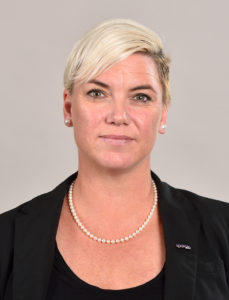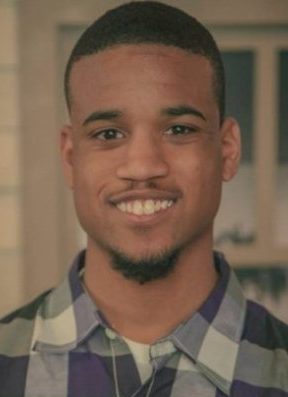As a liberal arts institution, it is imperative that both faculty and staff understand how to meet the educational needs of TCU’s ever-diversifying population, including first- generation college students, students from single-race schools, and students with diverse learning experiences. The aim of this conversation was to provide helpful insights on how to move from diversity to full inclusion of TCU’s underrepresented student populations. Diversity involves simply “counting,” while inclusion involves “making heads count.” In other words, inclusion goes beyond numbers and implies sustained efforts to ensure a plurality of perspectives in an educational setting. Inclusion is a three-step process that involves: getting students from diverse backgrounds on campus, creating a scholastic environment that encourages increased diversity, and immersing in cross- cultural contexts. This conversation focused on the second step by facilitating a discussion about how to interact with underrepresented student populations on campus.
To begin our Teaching and Learning Conversation (TLC) this past spring, we felt it was important for everyone to acknowledge the different contexts that they bring into the discussion. For example, we both work in the athletic department, so we have a different lens for our interactions with the student population. The same is true for faculty or staff members in different departments such as: admissions, student affairs, the College of Science and Engineering, the Neeley School of Business, or other administrative roles. We both believe that the key to moving towards an authentic understanding of diversity on campus is to utilize the cultural richness that already exists in the form of faculty and staff experiences. The only way to do this effectively is by having faculty and staff come together to discuss ways to consistently improve our ability to recognize the diverse experiences that students bring to the university.
During the TLC discussion, we facilitated dialogue about the meaning of terms such as diversity. No two people have the same definitions for terms like diversity, inclusion, or representation. However, through engaging in dialogue, it is possible to develop a common vocabulary about terms and have a genuine conversation. Doing this is important because faculty and staff can often think they are engaging in inclusive practices while still marginalizing students. We discussed how to create a common vocabulary for terms such as “underrepresented population” and “inclusion.” The meaning of diversity and underrepresented population is deeply contextual. For example, a black female student-athlete may be an underrepresented population in a business or pre-med class. At the same time, that person may fit into a majority population in a social work or communications class.
This led us to how language is part of the cultural production of knowledge. It is easy for all of us to take for granted the shared vocabulary we have with those who have similar experiences to our own. We overlook how all of the knowledge that we possess was produced based on our understanding of culture. Faculty and staff members can sometimes assume that all students have the same knowledge base when entering a university setting. Some students have access to cultural capital that others do not. This can impact the way that a student processes seemingly “basic” information. For example, students born outside of the United States may not have the basic understanding of the United States needed to follow a discussion about race relations being informed by America’s history of slavery.
One final point about how language is culturally produced is that language is also a performative process. This means that we gain more knowledge of the vocabulary we use through constant interactions with other people. This can impact the way we understand terms such as diversity and underrepresented student populations. We should be working to expand how we understand these terms. Only by consistently engaging with others and creating a broader worldview can we build a more fully inclusive society. If our aim is to create an ongoing conversation about inclusion and diversity, then connecting with others across the campus is essential.
During the final part of our TLC we facilitated a discussion about the Implicit Association Test (IAT) created by Harvard University. Each participant had taken one of the bias tests prior to attending the TLC. The IAT measures attitudes and beliefs that people may be unwilling or unable to report, or may even be unaware they might have about a group of people. For example, someone may believe that women and men should be equally associated with science, but their automatic associations could show that they associate men with science more than women. The IAT measures the strength of associations between concepts (e.g., black people, gay people) and evaluations (e.g., good, bad) or stereotypes (e.g., athletic, clumsy). We chose to discuss the IAT because our implicit biases can inform how we understand terms such as diversity, inclusion, and the meaning of representation. More importantly, it can impact our interactions with different populations. Thus, to create a more inclusive environment that is welcoming to all students, we must understand our own starting point for interactions. In order to move from diversity to inclusion, faculty and staff must recognize the importance of their own professional context by understanding the relevant vocabulary, culturally produced knowledge, and implicit biases they bring into an interaction. Here are some resources to help further this topic into future conversations.
Resources
The Evolving Language of Diversity by Kathy Castania
Implicit Association Tests (IAT)
Understanding Race: Are We So Different? (A Project of the American Anthropological Association)
White Privilege: Unpacking the Invisible Knapsack by Peggy McIntosh
Teaching Tolerance—Diversity, Equity, and Justice

 This article was written by Jessica Hazard, Assistant Athletics Director for Student Athlete Development and Rich Thomas, Athletic Academic Service Center Tutor and Doctoral Candidate, for the Fall 2017 Issue of Insights Magazine.
This article was written by Jessica Hazard, Assistant Athletics Director for Student Athlete Development and Rich Thomas, Athletic Academic Service Center Tutor and Doctoral Candidate, for the Fall 2017 Issue of Insights Magazine.